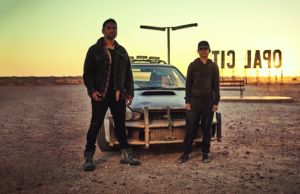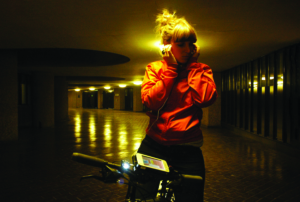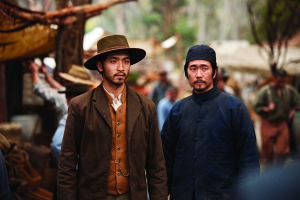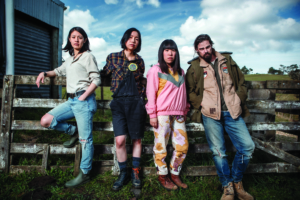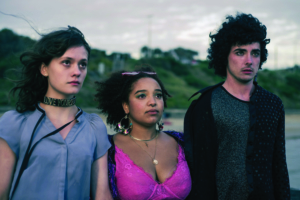There is a coldness to the vision of Melbourne presented in Seven Types of Ambiguity, the six-part ABC adaptation of Elliot Perlman’s novel of the same name. Director of photography Bonnie Elliott lets us reach into different parts of the city – from the high office buildings looking out over greenery, to the brightly coloured lights of brothels. Characters walk through the crisp air along Port Phillip Bay and sit under artificial lights in a remand centre. We see the city through intimate eyes and bedrooms, but also often – as the camera slowly tracks streets from above – as a city numbed and removed.
Joe Marin (Alex Dimitriades), a high-powered investment broker, has been given the responsibility of picking up his son from school after an excursion while his wife, Anna (Leeanna Walsman), travels to Sydney for a conference. Yet, when he gets to the school, it is empty except for the after-hours care staff and the school principal. When Sam (Harrison Molloy) can’t be located, the police are called – as is Anna – and the two parents frantically expect the worst. But, while Seven Types sets up this disappearance as the mystery that will drive the series, the narrative rapidly shifts as Sam is found – by all measures, safe and unharmed – just sixteen minutes into the first episode. It is following his rescue from the apartment of Simon (Xavier Samuel), Anna’s former boyfriend from her university days, that the rest of the series unravels: Was this a kidnapping, or a misunderstanding? What is Simon’s current relationship with Anna?
It seems everyone is lying about something – but whose lies matter?
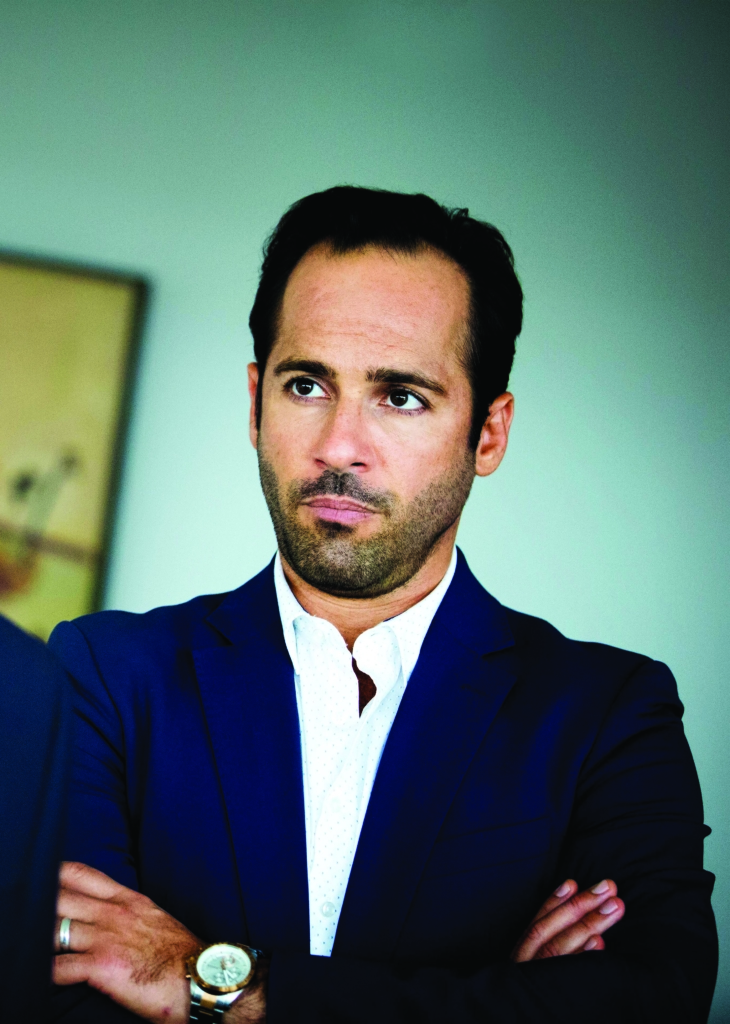
While the catalyst that triggers the action of the show – and the interactions between many of the characters – is this assumed kidnapping, for much of the series, Sam’s disappearance takes a back seat as we follow the mess of relationships that surrounds this event. Apart from Simon, each adult protagonist forms the anchor of an episode. First, we meet Joe, then Simon’s psychiatrist, Alex (Hugo Weaving). They are followed by Simon’s friend Angela (Andrea Demetriades), known to Joe as ‘Angelique’, the sex worker he frequently visits; Joe’s friend and colleague Mitch (Anthony Hayes), who himself goes on to become entangled with Angela; and Gina (Susie Porter), Simon’s lawyer and Alex’s friend. Finally, after sitting quietly in the wings for much of the series, Anna’s side of the story is revealed to us. Through the perspective of these six characters, we are thrust into the worlds of high finance, of psychology, of law; Sam is largely a device to tie these various plot points together.
Yet, far from dismissing Sam’s story, the construction of the narrative instead brings it into sharp relief: everyone’s lives are filled with tragedies of different scales. The loss of a child, even when that loss lasts only hours, is undeniably tragic, and the way this escapes the family bubble and becomes fodder for Melbourne’s tabloid newspapers and nightly broadcasts – as is the case for the Marins – is a particular and unusual stress. Seven Types shows us the ways tragedy and hardship quietly fold into everyone’s worlds: we get glimpses into the lives of Joe’s disabled brother and Gina’s bullied teenage daughter; into Angela’s strained relationship with her immigrant family; into Alex’s divorce. The tragedy of this lost child is just one sadness in a city with a sad heart. It is just one stress in a city that, we are shown, too often looks inward.
Seven Types shows us the ways tragedy and hardship quietly fold into everyone’s worlds … The tragedy of this lost child is just one sadness in a city with a sad heart. It is just one stress in a city that, we are shown, too often looks inward.
Subtly, almost imperceptibly, a different colour grading is used for each episode of Seven Types, each character thus existing in a world unto their own: Andrea’s yellows, alternately bright and sickly; Mitch’s greens, of sunshine on grass and of hospital lights on old hospital walls; Alex’s browns, conveying durability and capable professionalism. This gives the episodes a sense of distinction: they aren’t just about separate people, but about people who live in separate worlds – no matter how closely their lives may be linked. In fact, the characters are, more often than not, introduced absent any sort of exposition, with scenes and relationships unceremoniously dropped in on. These are individuals, we’ll learn, with stories behind them and stories ahead of them; we are visiting them for only a moment. As characters, they are built in fits and starts as we slowly discover who they are. Then, just as we think clues are being seeded, they are discarded, never to be toyed with again.
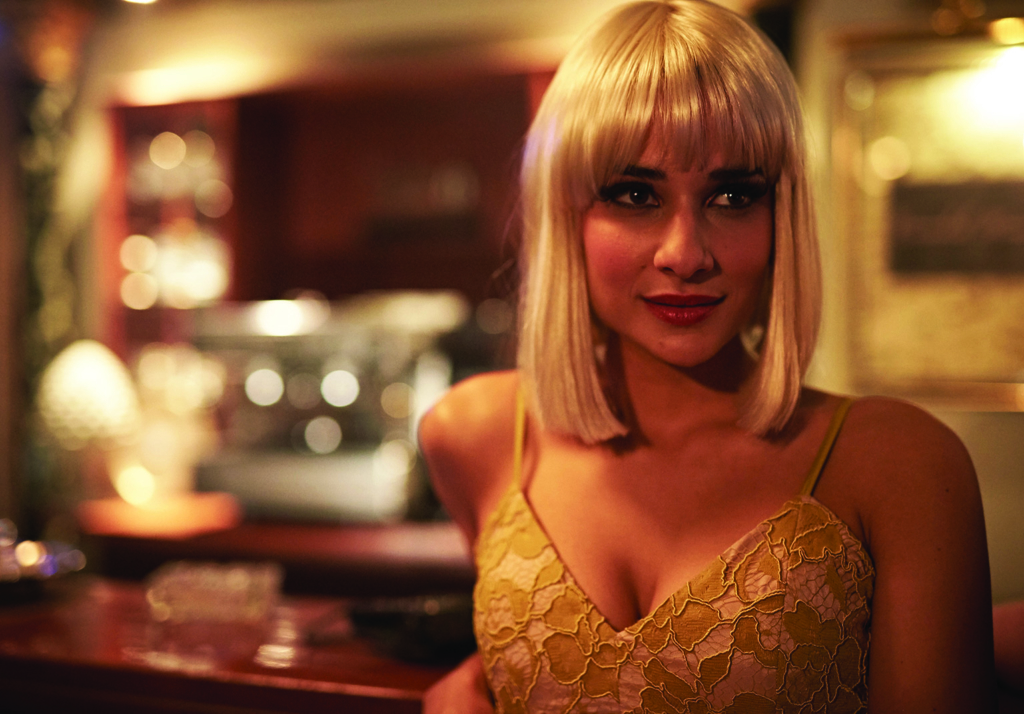
The performances are universally excellent. Weaving’s Alex is kind and stoic, but always ever so close to a complete breakdown in a world where everyone is wearing multiple facades. Angela is the only one to wear these masks so explicitly, performing as Angelique while undertaking sex work; Demetriades plays these two sides with honesty and depth. While the series revolves around Simon’s actions, and he is present in everyone’s story, it is him we learn the least about. Playing the role, Samuel elicits feelings of both tenderness and wariness in the audience, asking us to constantly ponder how much Simon has been damaged and how much damage he has done.
But Walsman is given the biggest task among the cast: a largely silent enigma for much of the series, Anna is as much what the other characters – and the audience – create of her as how Walsman portrays her. This changes in the final episode, when we finally meet the Anna beyond the social construction. It’s a role that asks Walsman to be somewhat blank so that perspectives and emotions can be projected onto her, all while ensuring that her character feels real as the series unfolds and that the story maintains an undercurrent of truth and compassion. Walsman pulls off this delicate balance with seemingly no effort at all.
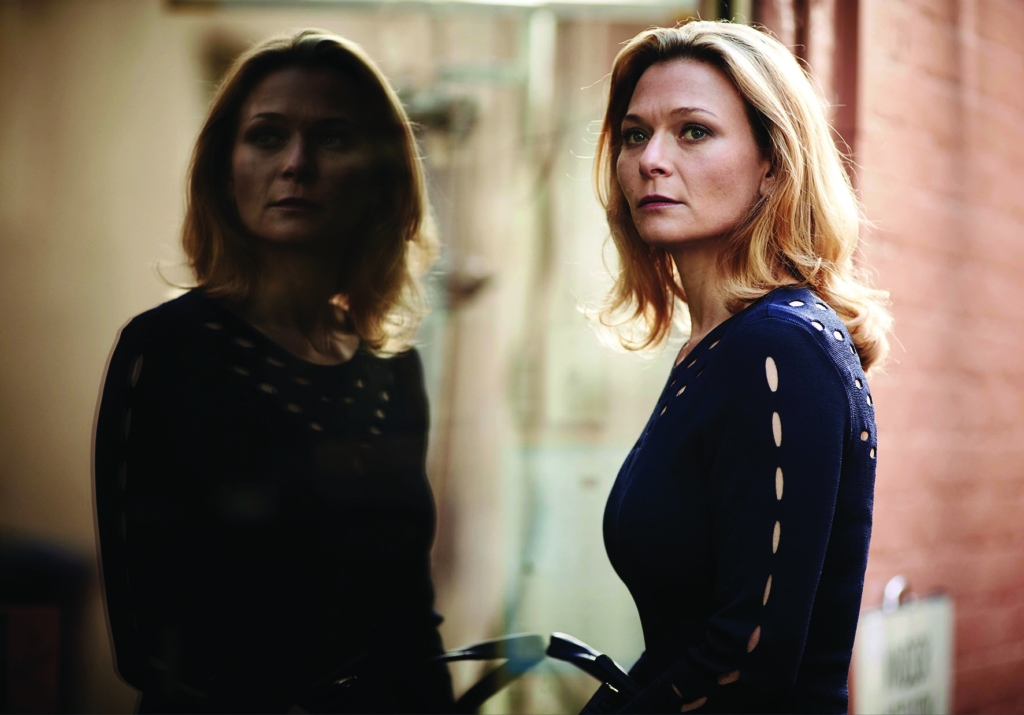
Throughout the series, directors Glendyn Ivin, Matthew Saville and Ana Kokkinos – realising the scripts by Jacquelin Perske, Jonathan Gavin and Marieke Hardy – play with our perceptions of time, and it’s easy to lose our footing. Are events happening before or after the catalyst that opened the series? Are we filling in more backstory, or are we pushing forward into the future? The stories of the six characters continually intersect: scenes are interlaced, and approached through different characters; camera shots are both shared and diverted. We see Joe, frustrated, searching for change for the vending machine, and at first we do not know that it is Alex who hands him the money in a moment of kindness; this encounter would be forgettable if not for the way in which their lives go on to collide. When we revisit this scene, we are armed with new knowledge and read the interaction through new eyes. While some shots are maintained over the episodes, others change: slightly longer at one end here, at the other end there; lingering on an over-the-shoulder glance, or hurrying away, quick and preoccupied. The same events, refracted through different characters, appear slightly different – our memories are all hazy and divergent during the retellings.
It’s this constant revisiting and reshaping of events that makes Seven Types so compelling: over the course of its six episodes, the series plays with time and space to stretch out the story into a flowing, multidimensional arc. In each episode, our understanding of this world grows outwards in time both before and after Sam’s disappearance. It takes time for the audience to learn that each episode’s beginning – a hazy, greyed and slightly out-of-focus opening sequence – is gradually letting us in on more of Simon’s life, often about his past, in a series in which his story is the most obviously and acutely left out. By the end of each episode, we are gently nudged forward in time from where we ended the episode before. In between, time moves nonlinearly, past intersecting with present, so that we’re not always sure where in time we’re sitting. But Seven Types also spreads its narrative increasingly sideways, expanding the lives of its ancillary characters. As the series progresses, this complex expansion leaves more and more edges frayed, more and more facets of life unexplored – continually stretching the story into one too big to contain on screen.
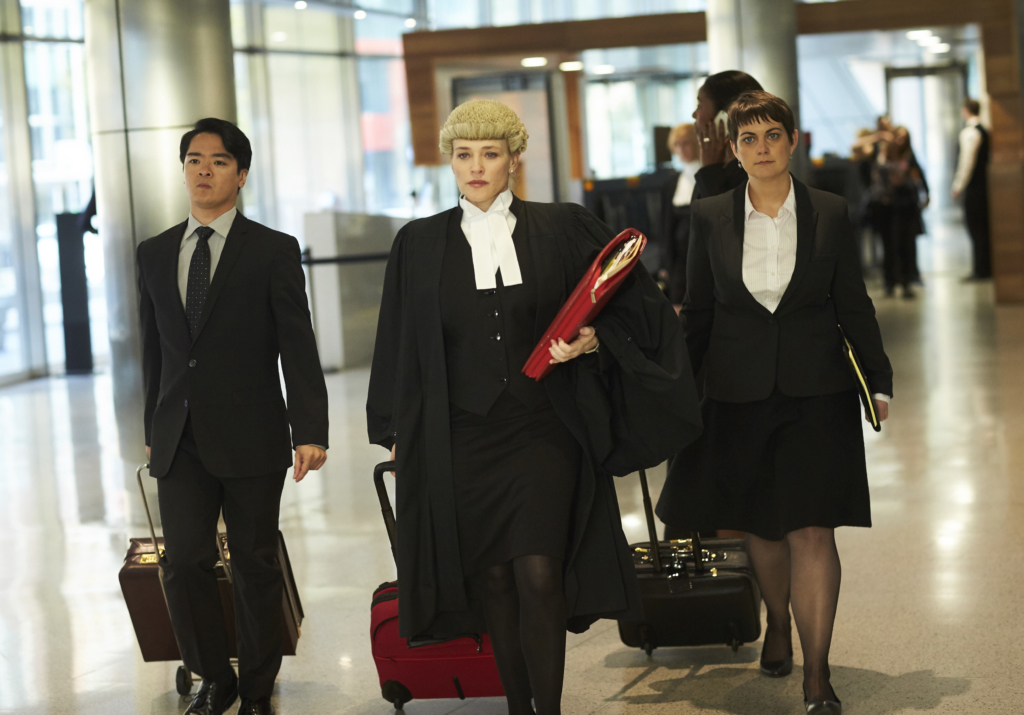
We expect that it’s the mother’s perspective that will be centered in a story about a child’s kidnapping. By sidelining Anna’s story until its very last episode, however, the show amplifies the implication of guilt increasingly placed on her shoulders – a tool for elaborating the narrative arc without getting caught up primarily in her grief. The series is less a story about a child missing and found, and more a story of various lives forced to intersect. And so the sixth and final episode, when we finally pivot to Anna’s point of view, is distinct from the rest of the series. Walsman immediately destabilises us: just as we’ve spent the last five episodes growing convinced of Anna’s guilt or collusion, her emotion in the sixth episode’s first few minutes – of a woman distraught by her own performances of who she is – is genuine. This isn’t the tale we thought we were being told. She has lied, yes, as we see her car pull up not at an airport but on a seaside road. As we have learned, however, everyone lies – and she isn’t the cold woman the other characters have so desperately personified her as.
Up until this point, Anna has stood somewhat outside of Seven Types’ narrative framework. Here, we return to the most traditional rendition of these events: a mother, conflicted with grief, mourning for a son who could’ve been lost; a mother mourning for a son who is lost (he died, we learn only in an aside, long before we joined this story); a mother who loves, and is happy. But she is also a woman who lies to her family, who considers cheating, who doesn’t quite know why she is living this life that she leads. The episode maintains the steeliness that sits over this Melbourne, but there is something more human about it: the blue colour grade feels crisp and bright, closer to our world than the reddish purple we saw in the episode prior. Anna’s transparent emotion aligns with this blue, smoothing a natural sadness over the manufactured feelings encapsulated by the earlier hues. This episode is quieter than the rest, too: gone are the dissonant strings, the hesitant keys, the thrumming electronic sounds that dominated the composition. Instead, when we have strings, they are soaring and reaching; the piano is gentle and flowing. Finally, we see this woman as a person – not as a figure talked about, walking around the edges of other people’s lives.
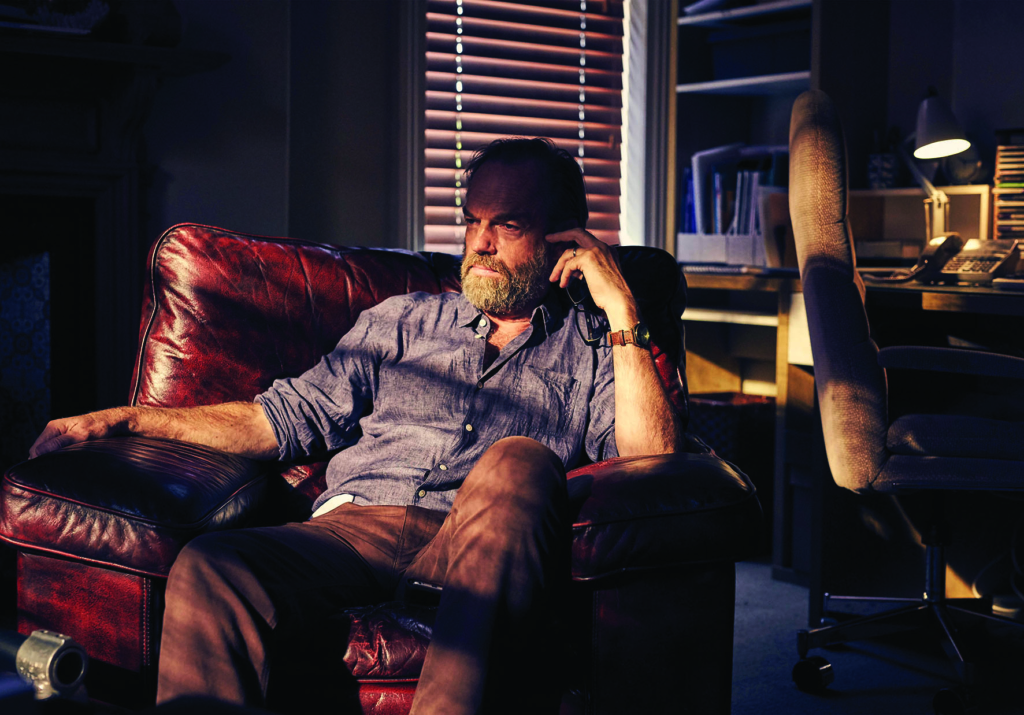
The series leaves its stories unresolved to the last. We know, at least, what happens to Simon in the courtroom – or perhaps Anna’s version of what happens to Simon in the courtroom. But, otherwise, we leave this world with the sense that it existed before we looked in, and will continue to do so after we leave. Too much is left ambiguous for us to truly comprehend the story in its entirety. With the knowledge that completion is impossible, Seven Types of Ambiguity instead chooses to give us no more than a peek.

